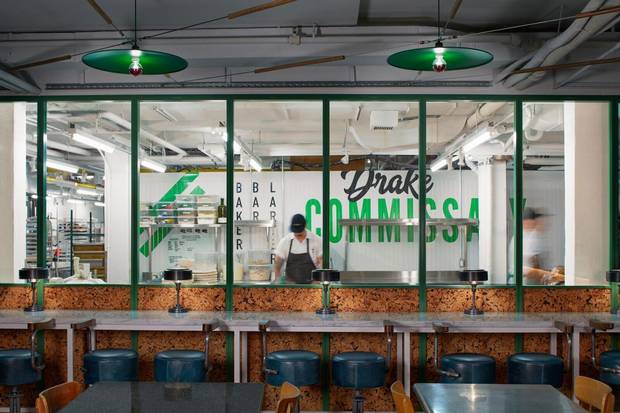Back in 1933, when Ernest Gantt opened the very first tiki bar, Hollywood's Don's Beachcomber Café – which would give birth to the Don the Beachcomber chain and inspire "Trader Vic" Bergeron – photography was a ridiculously expensive hobby. So, it's a good bet patrons, fun-loving as they were, were not snapping photos of every square inch of the place, or the artful arrangement of their Pu-Pu platters.
Yet it's likely the tsunami-like resurgence of the tiki bar might in the 21st century be a gently lapping wave were it not for the Instagram Generation. Think about it: A tiki bar, with its grimacing idols, flaming cocktails, gnarly nautical decor, and swinging puffer fish lamps, is the perfect vehicle for the Insta-selfie.
Or is it?
"Hmm, I don't know," says Rod Moore, owner of the Shameful Tiki Room, an authentic recreation of the quintessential mid-20th-century tiki bar, which counts locations in Vancouver and Toronto [Instagram followers: Vancouver, 4,168; Toronto, 2,561]. "If you mean social media in a loose way – as opposed to Instagram specifically – I suppose so.
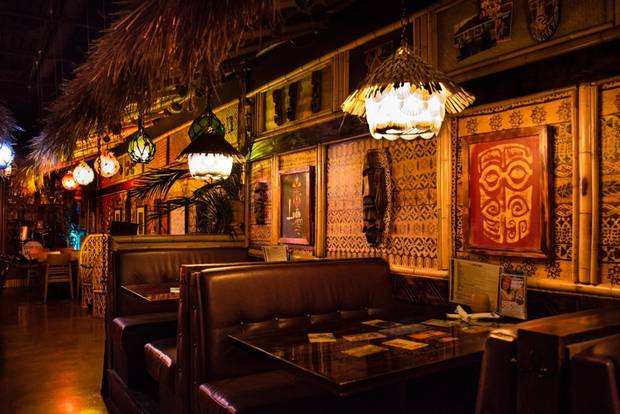
The Shameful Tiki Room’s Vancouver location has more than 4,000 Instagram followers.
Rod Moore
"More than anything, I just think [tiki] was one of those things that was going to come back because it was fun."
Really? Then why do we read constantly about new restaurants with ready-made "Instagram walls"? Why is there sanitized, commissioned graffiti in washrooms? Why are interesting vignettes hiding in pokey corners? And why do ice-cream cones look so complicated and weird? Aren't restaurateurs and interior designers kowtowing to the smartphone-obsessed millennial?
"Everybody knows that everything is being captured and recorded, so the composition and design of what happens on the table goes through exhaustive studies," DesignAgency founding partner Matt Davis concedes. He's examining a lone place setting sandwiched between sawhorses and rolls of fabric in what will be The Civic, a "tavern-inspired" restaurant in Toronto's recently reborn, east end Broadview Hotel [9,253 followers]. And while he's discussing the amount of texture, colour and tiny sculpture (in the form of cutlery and glassware) that a smartphone can frame, he stresses that his 20-year-old firm hasn't changed the way it designs.
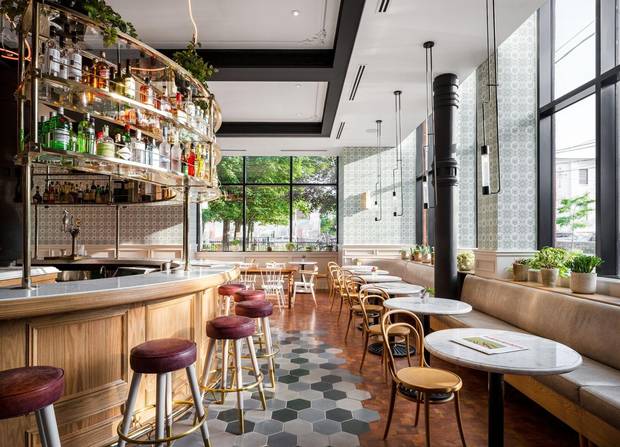
The use of brass at the Broadview Hotel’s Café + Bar makes reference to Jilly’s, the strip club the hotel housed for around three decades.
Worker Bee Supply
"We're not tailoring designs towards phones," he says matter-of-factly. "Since we've been designing, we've talked about having our key moments and our feature pieces; budgets are never infinite, so you've always got to target in certain areas."
At the hotel's "Café + Bar," those key moments are the neon installation overhead, which, from some angles, resembles a woman's face, and the ample use of brass, especially in pole form; both refer to the 30-odd years the main floor housed the infamous Jilly's strip club. However, to learn that the neon was created by Dan Raljic, whose father, decades ago, created the "New Broadview Hotel" sign that's now mounted for Instagrammable moments while dining on the rooftop, or that the "Dingman's Sour" cocktail in one's hand is named for Archibald W. Dingman, who built the place in 1891, you'd have to speak with an actual human. So are Instagrammers talking to actual people?
"I find now, more than in the past, people care about what they're drinking and the stories behind everything," says Broadview Hotel's head bartender Tony DaSilva, who doesn't mind that, on weekends, at least half of his customers posting photographs of everything from their drinks to the wallpaper behind them (which is a reproduction of the very first layer uncovered during renovations).
"It's like art," Mr. Davis agrees, "where you can appreciate something on the wall when you first see it, but then you start learning a little bit more about it and you start gathering a bit more of an appreciation for it."
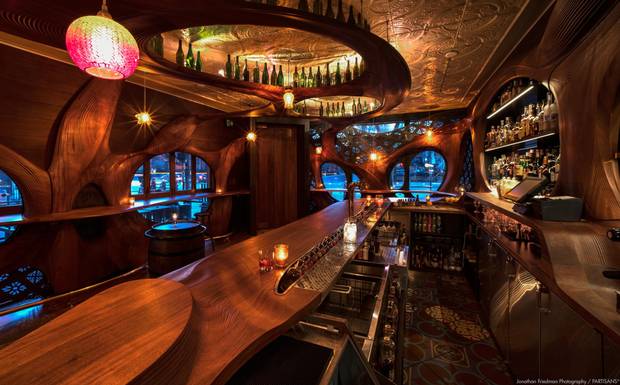
Bar Raval has been referred to by some as ‘the most beautiful bar in Toronto.’
A.J. Fernando
Funnily enough, over at Bar Raval [21.6K followers], which The Globe (and many others) has called "the most beautiful bar in Toronto," co-owner Michael Webster says that he and his partners wanted people to stuff their selfies: "We wanted to build a place that had the ability to take people away from their phones," he says, stroking his luxurious beard. "You get lost in here; a lot of people will share food or just start talking to someone next to them. It's a very social atmosphere."
Open for less than two years, Bar Raval is, however, ridiculously photogenic. Designed by Partisans, the ultrahip architecture and design studio that transformed the enormous, abandoned Hearn Generating Station into the ultimate selfie space for Luminato 2016, the tiny, chairless bar turns the customer into Jonah, except instead of gazing upon the whale's ribs, it's the stretching, sinuous musculature, but here rendered in expensive mahogany.
That mahogany, which needs to be oiled once a year in a process that takes 15 people more than 20 hours, is such a draw that there are "people coming in and not hanging out," Mr. Webster admits, "which is fine and we enjoy that." However, the 25-year food-service veteran says he has no interest in writing content for the bar's Instagram account "that has anything to do with shameless self-promotion." Effective social media, to him, opens a (dirty) window into restaurateur life. His friends over at the "anti-Yorkville" Brothers Food & Wine [4,921 followers] on Bay St., "crush it" because "their Instagram is, like, showing how ghetto they are and how real they are, and a mess in the office, or Chris [White] cleaning a toilet."
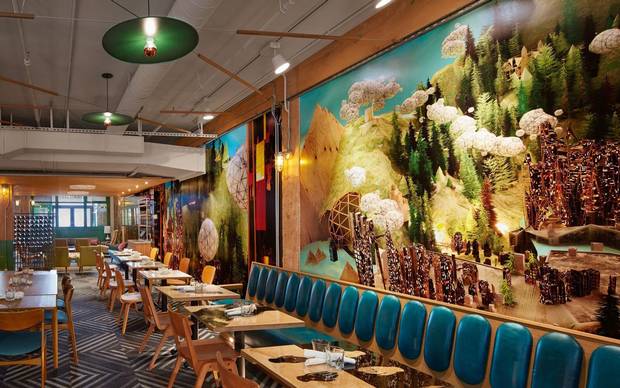
A large mural adorns a wall of the Drake Commissary.
Colin Faulkner
While there aren't any janitorial photos over at the Drake Commissary's Instagram account, there are plenty of peeks behind the curtain. Actually, the physical space, which opened less than six months ago on industrial Sterling Road, was designed around showing customers "food is coming from somewhere; it doesn't just magically appear here," chef Joel Dolman says. A large window frames a phalanx of curing meat, another shows a line of bakers hard at work; aware of Insta-snappers, however, an enormous Commissary logo behind the bakers brands all photographs.
Elsewhere at the Commissary, there are colourful murals, a wall of muffin trays and patterned upholstery to add interest to the digital frame. But, again, Mr. Dolman stresses that the Drake's customers aren't here for the surface, but rather for the tastes, the smells, the experience: "Food's got to have a story behind it, some nostalgia, and part of what the Commissary does is make things completely from scratch, and that is showcased in our café, in our larder," he says.
And remember, says designer Matt Davis, with cellphones playing the part of "a digital memory of sorts," not all selfies are vacuous vehicles for Instagram: "They may be taking shots for their family history."
"We're looking at the evolution of Instagram becoming more like a photo album," Mr. Webster agrees. Besides, he finishes, while "people always want the world to know that they're up to cool things, anything that's cool isn't broadcasted."
